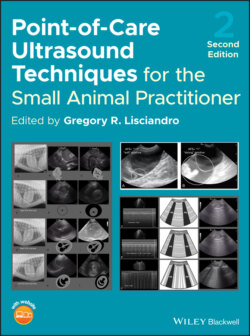Читать книгу Point-of-Care Ultrasound Techniques for the Small Animal Practitioner - Группа авторов - Страница 253
Pearls and Pitfalls, The Final Say
ОглавлениеAFAST is superior in detecting hemorrhage to laboratory values (packed cell volume, lactate), physical examination findings, and radiography (Lisciandro et al. 2009; Rozycki 1998; Rozycki et al. 1998, 2001; McMurray et al. 2016). AFAST is an advantageous ultrasonographic format for nonradiologist veterinarians to use for the timely detection of free fluid representing bleeding or forms of peritonitis since ultrasound is superior in sensitivity to physical examination and abdominal radiography.
Should be a routine add‐on for all POCUS abdominal exams (Global FAST is an even better approach).
Should be standard of care for all bluntly traumatized small animals, as it is in people.
Should be used in penetrating trauma cases with the understanding that AFAST is generally thought to be very specific for detecting intraabdominal injury (by finding free fluid), but lacks high sensitivity.
Serial exams should always be performed in bluntly traumatized animals, after rehydration and resuscitation in trauma and nontrauma including suspect peritonitis cases.
The use of the AFAST‐applied abdominal fluid scoring system may be effective in bleeding traumatized and nontraumatized dogs to predict degree of anticipated anemia and may be used also for peritonitis or other effusive conditions as a monitoring tool by scoring (AFS 0–4).
The diagnosis of anaphylaxis in dogs may be supported with the finding of a sonographic striation of the gallbladder wall (halo effect or double rim effect). However, a Global FAST (including TFAST and Vet BLUE) helps rule out pericardial effusion/cardiac tamponade and right‐sided cardiac failure, and placing the constellation of patient information (history, physical examination, laboratory findings, imaging) within the complete clinical picture is important to avoid mistakes and “satisfaction of search error.”
